ELAR K.2
Developing and sustaining foundational language skills: listening, speaking, reading, writing, and thinking--beginning reading and writing. The student develops word structure knowledge through phonological awareness, print concepts, phonics, and morphology to communicate, decode, and spell. The student is expected to:
- (1) demonstrate phonological awareness by:
- (A) identifying and producing rhyming words;
- (i) recognizing spoken alliteration or groups of words that begin with the same spoken onset or initial sound;
- (ii) identifying the individual words in a spoken sentence;
- (iii) identifying syllables in spoken words;
- (iv) manipulating syllables within a multisyllabic word; and
- (v) blending syllables to form multisyllabic words;
- (vi) segmenting multisyllabic words into syllables;
- (vii) blending spoken onsets and rimes to form simple words;
- (viii) blending spoken phonemes to form one-syllable words;
- (ix) segmenting spoken one-syllable words into individual phonemes;
- (x) demonstrate and apply phonetic knowledge by:
- (B) identifying and matching the common sounds that letters
represent;
- (i) using letter-sound relationships to decode, including VC, CVC, CCVC, and CVCC words;
- (ii) recognizing that new words are created when letters are changed, added, or deleted such as it - pit - tip - tap; and
- (iii) identifying and reading at least 25 high-frequency words from a research-based list;
- (iv) demonstrate and apply spelling knowledge by:
- (C) spelling words with VC, CVC, and CCVC;
- (i) spelling words using sound-spelling patterns; and
- (ii) spelling high-frequency words from a research-based list;
- (iii) demonstrate print awareness by:
- (D) identifying the front cover, back cover, and title page
of a book;
- (i) holding a book right side up, turning pages correctly, and knowing that reading moves from top to bottom and left to right with return sweep;
- (ii) recognizing that sentences are comprised of words separated by spaces and recognizing word boundaries;
- (iii) recognizing the difference between a letter and a printed word; and
- (iv) identifying all uppercase and lowercase letters; and
- (v) develop handwriting by accurately forming all uppercase and lowercase letters using appropriate directionality.
- (A) identifying and producing rhyming words;
- Plus Plan

Sweet Sight Words Worksheet - ME
Practice reading, writing, and identifying the high-frequency word “me” from the Pre-Primer Dolch sight words list.
- Plus Plan
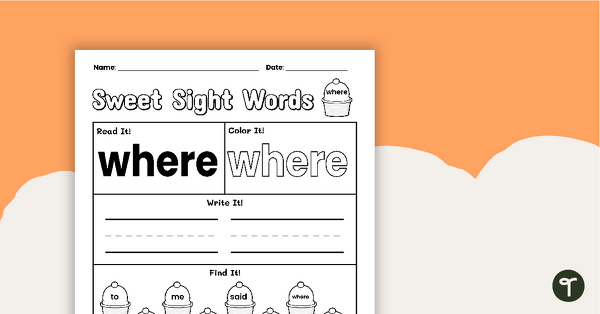
Sweet Sight Words Worksheet - WHERE
Practice reading, writing, and identifying the high-frequency word “where” from the Pre-Primer Dolch sight words list.
- Plus Plan
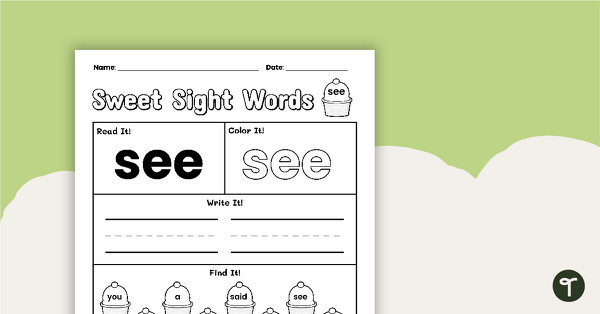
Sweet Sight Words Worksheet - SEE
Practice reading, writing, and identifying the high-frequency word “see” from the Pre-Primer Dolch sight words list.
- Plus Plan
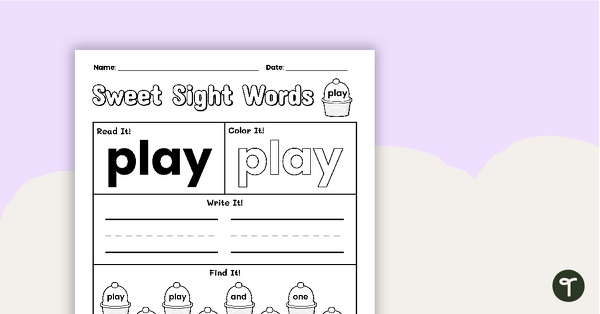
Sweet Sight Words Worksheet - PLAY
Practice reading, writing, and identifying the high-frequency word “play” from the Pre-Primer Dolch sight words list.
- Plus Plan
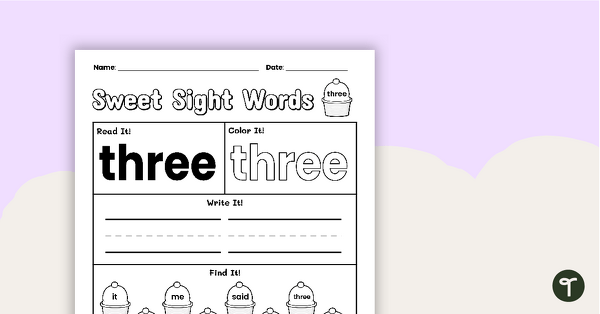
Sweet Sight Words Worksheet - THREE
Practice reading, writing, and identifying the high-frequency word “three” from the Pre-Primer Dolch sight words list.
- Plus Plan
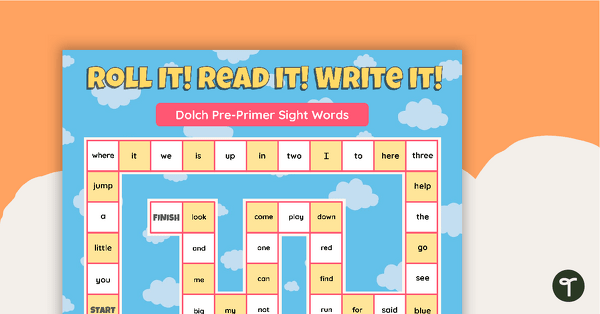
Roll it! Read it! Write it! Dolch Pre-Primer Sight Words
Practice reading and writing Dolch’s pre-primer high-frequency words with this board game for multiple players.
- Plus Plan
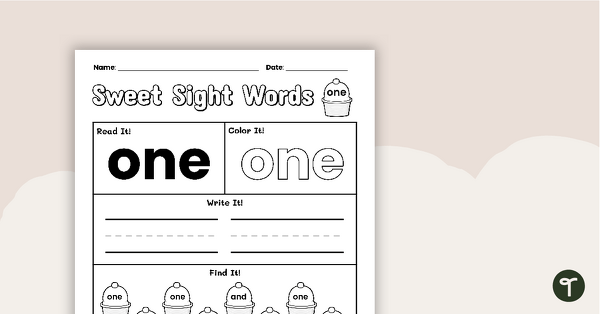
Sweet Sight Words Worksheet - ONE
Practice reading, writing, and identifying the high-frequency word “one” from the Pre-Primer Dolch sight words list.
- Plus Plan
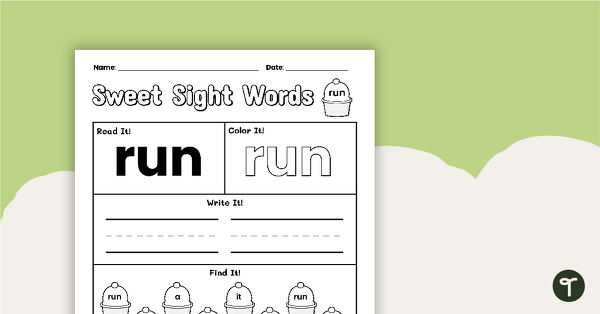
Sweet Sight Words Worksheet - RUN
Practice reading, writing, and identifying the high-frequency word “run” from the Pre-Primer Dolch sight words list.
- Plus Plan
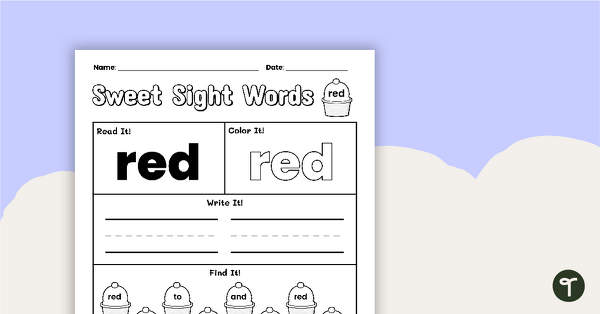
Sweet Sight Words Worksheet - RED
Practice reading, writing, and identifying the high-frequency word “red” from the Pre-Primer Dolch sight words list.
- Plus Plan
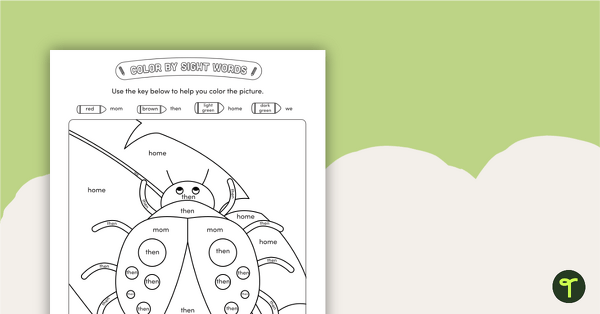
Color by Sight Words - 4 Words - Ladybug
A fun coloring activity to use when working with sight words.
- Plus Plan

Sweet Sight Words Worksheet - TWO
Practice reading, writing, and identifying the high-frequency word “two” from the Pre-Primer Dolch sight words list.
- Plus Plan
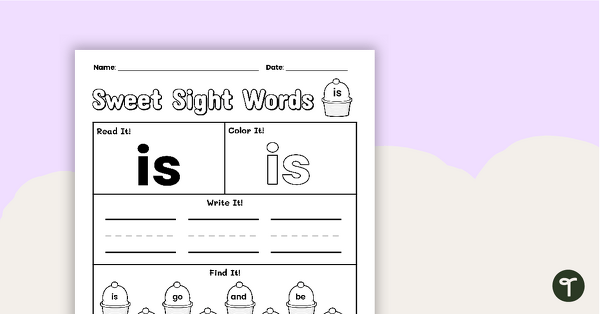
Sweet Sight Words Worksheet - IS
Practice reading, writing, and identifying the high-frequency word “is” from the Pre-Primer Dolch sight words list.
- Plus Plan
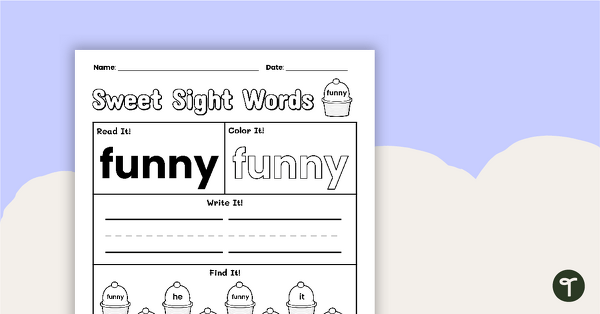
Sweet Sight Words Worksheet - FUNNY
Practice reading, writing, and identifying the high-frequency word “funny” from the Pre-Primer Dolch sight words list.
- Plus Plan
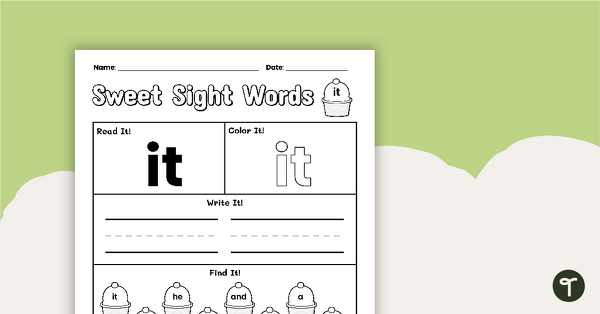
Sweet Sight Words Worksheet - IT
Practice reading, writing, and identifying the high-frequency word “it” from the Pre-Primer Dolch sight words list.
- Plus Plan
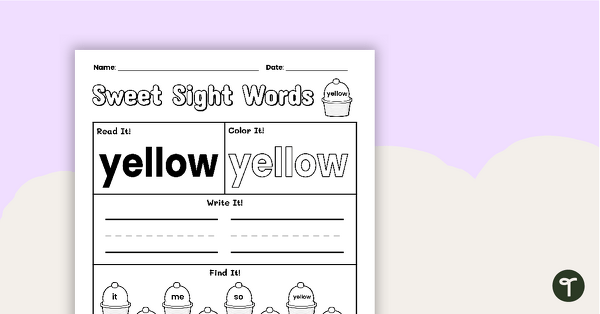
Sweet Sight Words Worksheet - YELLOW
Practice reading, writing, and identifying the high-frequency word “yellow” from the Pre-Primer Dolch sight words list.
- Plus Plan
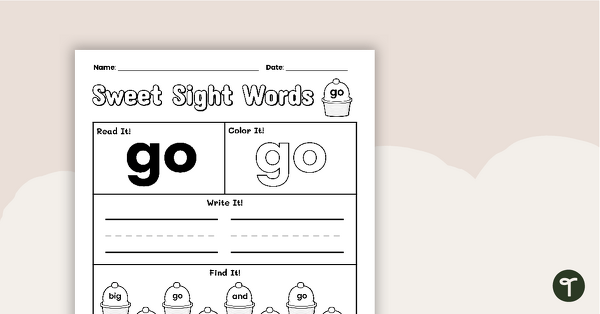
Sweet Sight Words Worksheet - GO
Practice reading, writing, and identifying the high-frequency word “go” from the Pre-Primer Dolch sight words list.
- Plus Plan
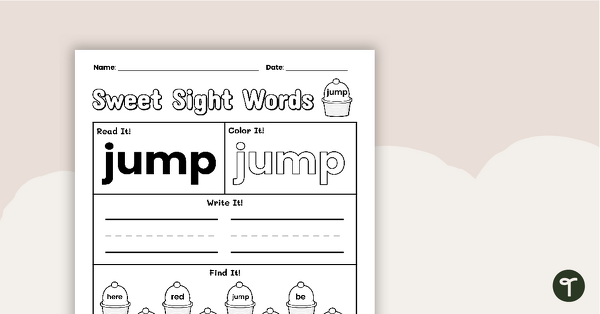
Sweet Sight Words Worksheet - JUMP
Practice reading, writing, and identifying the high-frequency word “jump” from the Pre-Primer Dolch sight words list.
- Plus Plan
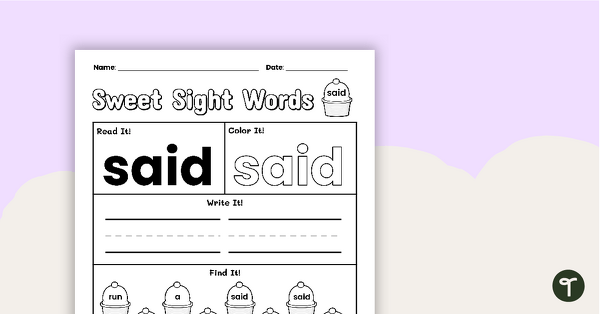
Sweet Sight Words Worksheet - SAID
Practice reading, writing, and identifying the high-frequency word “said” from the Pre-Primer Dolch sight words list.
- Plus Plan
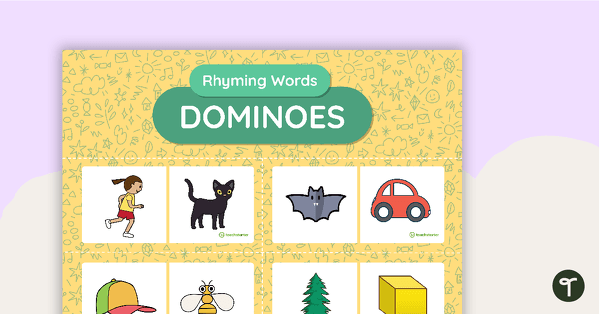
Rhyming Word Dominoes
Practice recognizing rhyming words using pictures and words with this set of 40 dominoes.
- Plus Plan
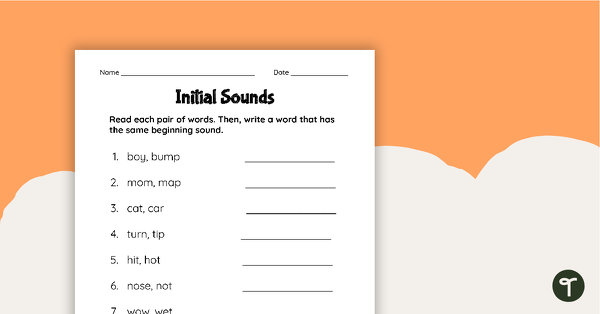
Initial Sounds Worksheet
A worksheet to practice beginning sounds.
- Plus Plan
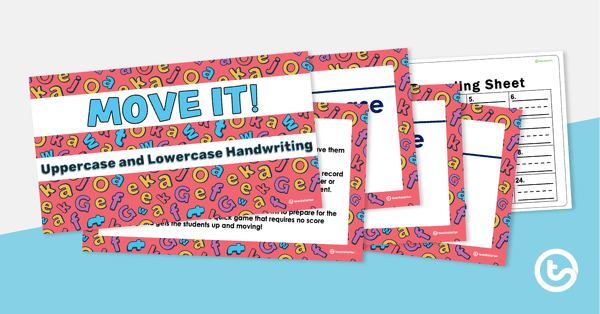
Move It! Handwriting PowerPoint Game
An active PowerPoint game to practice handwriting.
- Plus Plan
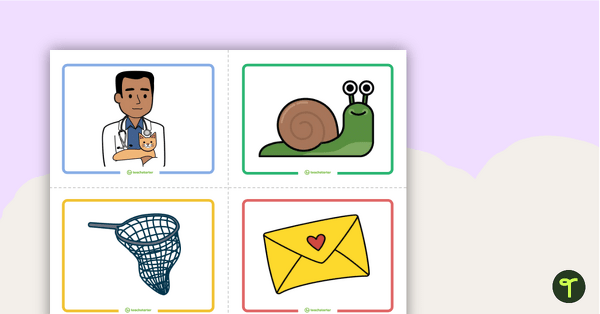
Rhyming Words Flashcards
Practice producing rhyming words with this set of 36 picture flashcards.
- Plus Plan
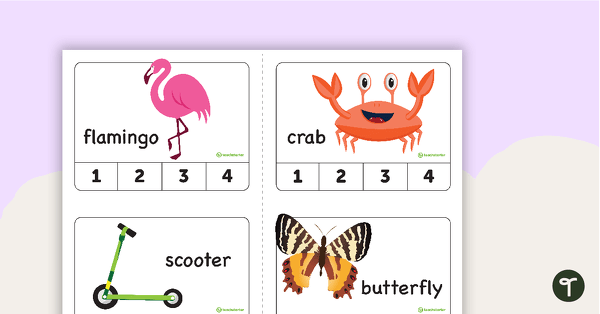
Syllable Clip Cards
A fun, hands-on activity to practice syllable recognition.
- Plus Plan
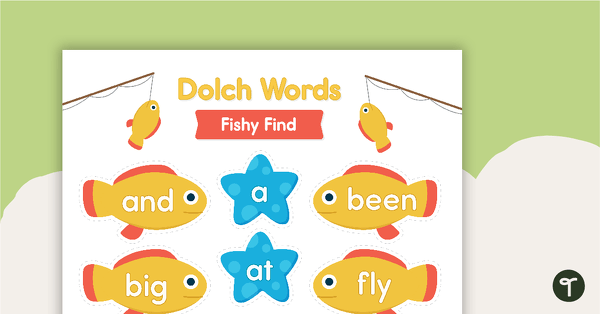
Dolch Word Fishy Find – Game
A fishing game for students to review Dolch sight words.
- Plus Plan
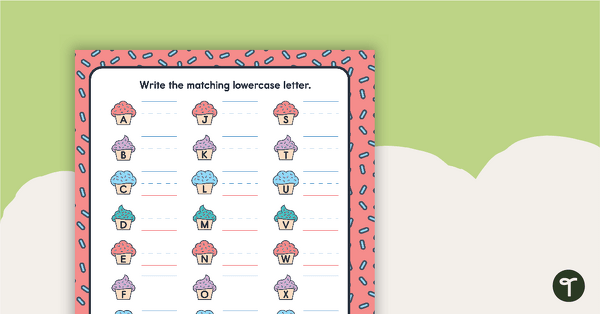
Uppercase and Lowercase Matching
A set of 4 pages for practicing uppercase and lowercase letter recognition.
- Plus Plan
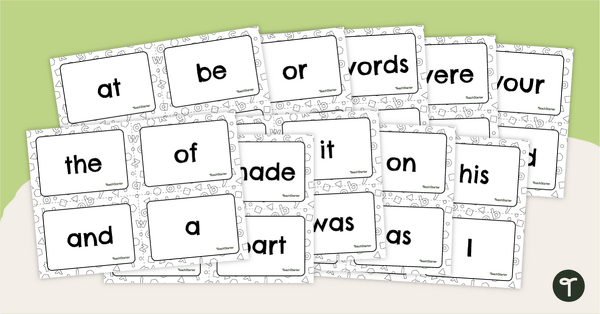
Fry Sight Words Flash Cards
A set of flash cards for the first 100 Fry Sight Words.
- Plus Plan
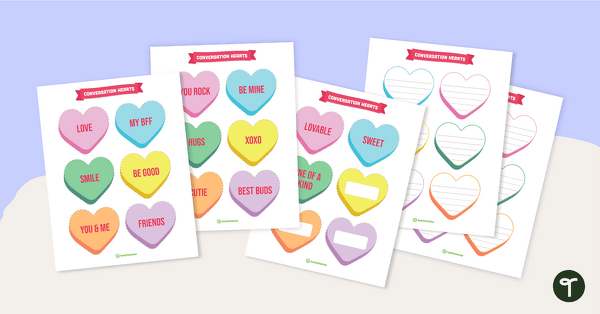
Conversation Hearts - Template
Turn this set of 18 conversation heart templates into a variety of teaching resources leading up to Valentine's Day.
- Plus Plan
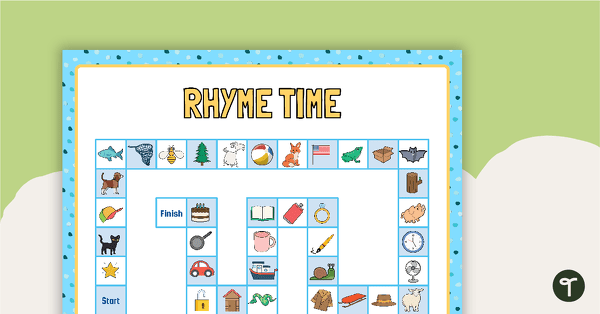
Move and Rhyme - Board Game
Practice producing rhyming words using our rhyme-by-picture board game.
- Plus Plan
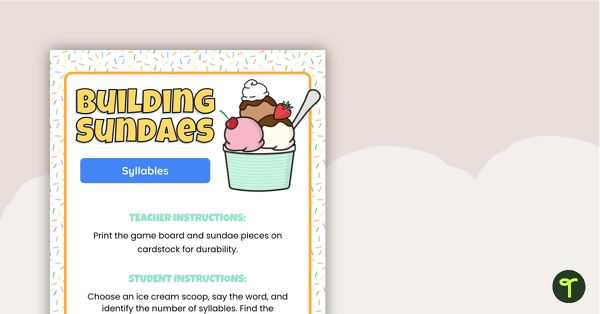
Building Sundaes - Syllables
Practice segmenting and counting syllables while building sundaes.
- Plus Plan
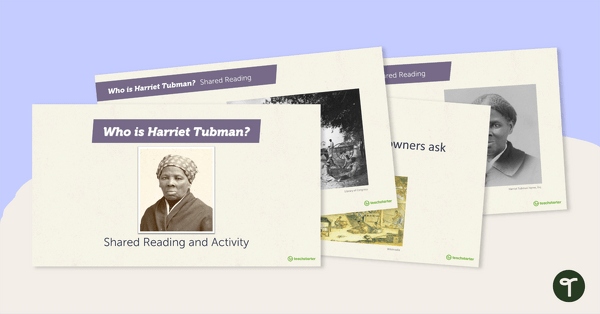
Who Is Harriet Tubman? – Shared Reading and Activity
Learn about Harriet Tubman and her work in the abolitionist movement with this 15-slide read-along PowerPoint presentation.
- Plus Plan
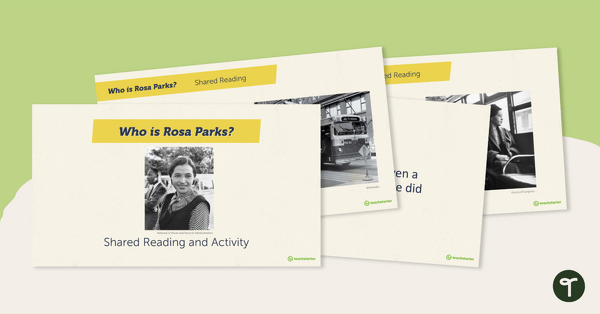
Who Is Rosa Parks? – Shared Reading and Activity
Learn about and discuss activist Rosa Parks and the Montgomery bus boycott with this 15-slide read-along PowerPoint presentation.
- Plus Plan
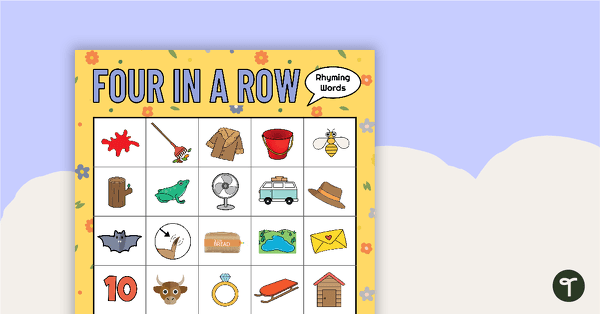
Four in a Row Game - Rhyming Words
Practice recognizing rhyming words with this set of 12 picture cards and game board.